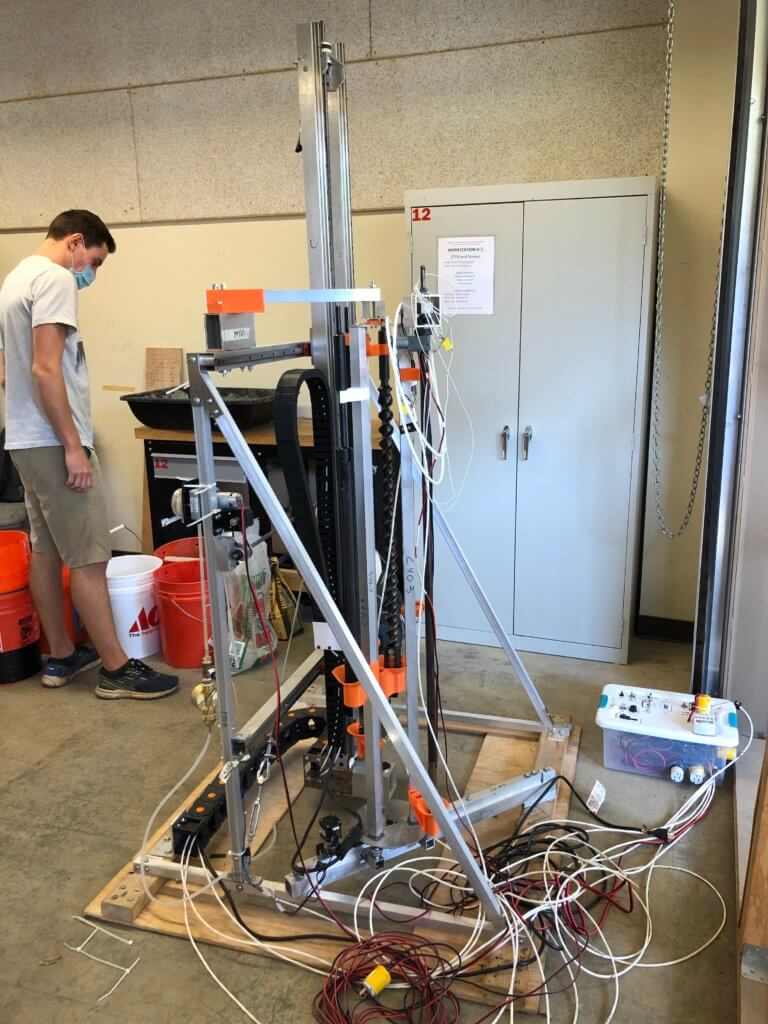
Ten university teams designed and built systems intended to harvest water frozen below the surface of the Moon and Mars during the 2021 Moon to Mars Ice & Prospecting Challenge held September 23-25, and Cal Poly took home Most Accurate Digital Core.
The team, named STYX & STONES, advanced from the semifinals in the Academic Linkage (RASC-AL) Special Edition: Moon to Mars Ice & Prospecting Challenge. The finalists designed, built and tested prototype systems capable of extracting water from ice deposits buried beneath simulated lunar or Martian soil.
This is only the second time a Cal Poly team entered the contest, and it is the second time Cal Poly made it to the finals. After last year’s team made it to the finals, the contest was cancelled due to the COVID-19 pandemic.
This year’s finals competition was originally set for this June at NASA Langley Research Center in Virginia. But the event was rescheduled to the fall because of the pandemic. This team included Bradley Behrens, Dominic Duran, Jacob Everest, Tyler Guffey, Michelle Leclere, Alex Martinez, Rebecca Rodriguez, and Schuyler Ryan.
The team members met regularly online via Zoom and in-person three times to examine last year’s Cal Poly prototype and to put together their own concept.
NASA has confirmed water on the sunlit surface of the moon and ice at the poles in addition to extensive subsurface water-ice deposits at mid to high latitudes on Mars. Being able to harvest and use that water is another feat. The innovation challenge for the university teams aims to advance critical technologies needed to make it possible. The teams will design and build hardware that could identify, map and drill through various subsurface layers, then extract water from a 600-pound ice block in a simulated off-world test bed.
The other finalists included Auburn University; Colorado School of Mines; Massachusetts Institute of Technology; Northeastern University (with Design Automation Associates); San Diego State University (with Collins Aerospace); South Dakota State University; Stevens Institute of Technology; University of Pittsburgh.


